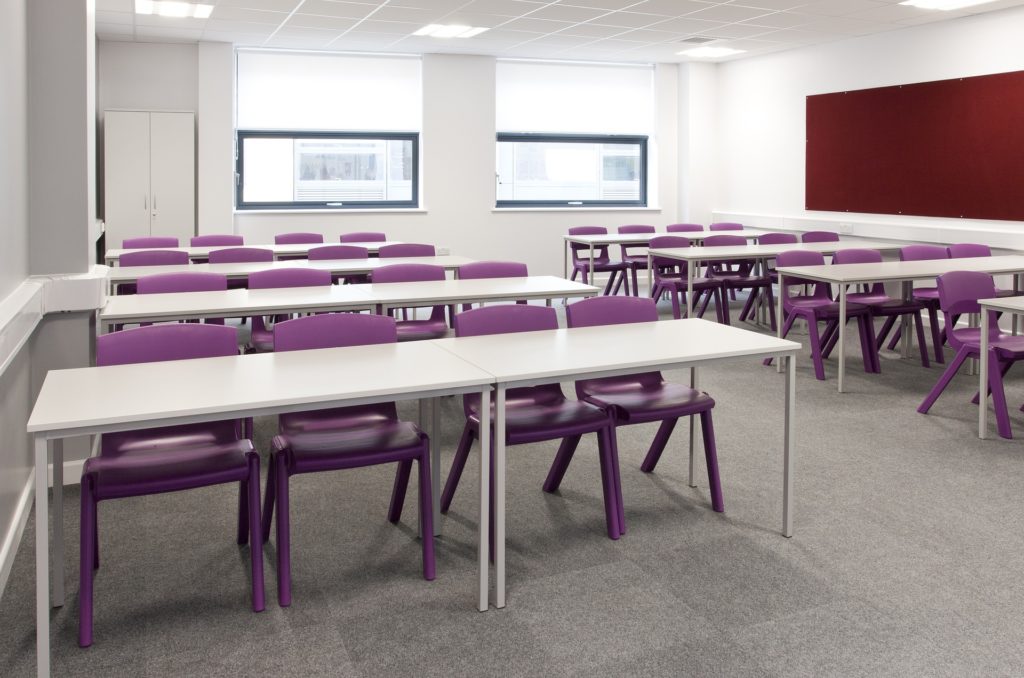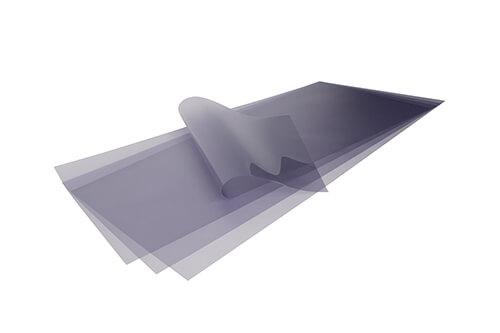Lighting affects more parts of our lives than we tend to realize. The right lighting can improve the appearance of a room, our moods, and even our overall health. On the other hand, lighting can create migraines, increase depression symptoms, and decrease our quality of life. For individuals with autism, lighting is even more crucial for their health. Lighting and Autism Spectrum Disorder is a complex issue that is different for each individual.
There are many ways that lighting can affect a child with autism, both positively and negatively, and much of it depends on the color of the light.
Table of Contents
How do lighting and autism interact for children on the spectrum?
Before we get into the different types of lighting and how to use them properly to help autistic individuals, let’s take a look at how lighting affects individuals on the spectrum.
The first thing that you need to know is that no child with autism is the same, and their experience will be different from other children. What one child with autism can handle with no issues will send another into a meltdown. This means you’ll have to be flexible regarding how you help each child.
With that being said, Autism Parenting Magazine describes how light affects autistic children by stating,
“Children’s moods are strongly affected by lighting: for some it provides a calming, soothing effect and for others, it acts as a stimulant.
Harsh lighting can often hurt the eyes of a person with autism. Flickering, humming lights can be very distracting and sometimes painful.
It’s often advised to use adjustable lighting in order to create a calming effect. Certain light levels and colors can be beneficial and the ability to control visual stimuli within the space is important.”
Signs of sensory overload
Very Well Health reports that signs that an autistic child is experiencing sensory overload due to the lighting in the room include:
- Anxiety and fear
- Restlessness
- Loss of focus
- Feeling overwhelmed or agitated
- Increased heart rate and respiration
- A preoccupation with or inability to ignore the source of the discomfort
- The strong impulse to leave the source of the discomfort
- Irritability and anger
The autistic child in your life may not have the verbal words to communicate what is wrong, so that’s where you have to be alert and ready to help them.
Removing them from the room can help, even if it’s just for a few minutes. You’ll still need a long-term solution, however, which is where changing up the lighting can help.
So what can you do? Let’s start by looking at the different types of classroom lighting and how each affects children on the spectrum.
LED lighting and autism
LED lighting seems to be all the latest rage. Just walk into any store to check out the lights, and the advertisements make it seem like LED is the way to go. It’s brighter, looks cooler, uses less energy, and can save you money.
So it’s the perfect source of light. Right?
While LED lighting may not be perfect, the U.S. Department of Energy thinks that it works well for children with autism.
What the research says
A study was performed in California to test LED lights. The goal was to see how it affected student behavior in general.
LED lights were installed in a general education fifth-grade classroom. Two more sets of LED lights were installed in rooms used for children on the autism spectrum.
Rather than slapping one set of lights up that had a single brightness level, slide bars were installed that allowed teachers to adjust the brightness level for different parts of the room. This allowed teachers to brighten or dim the lighting as it affected the students.
Not only did the school system save money by switching to LED lights, but student behavior greatly improved.
Many LED lights come in different colors that can easily be changed. This is a blessing for many, as they can switch up the color of the light in the room to whatever feels comfortable at the moment. While bright lights may be good at night when driving, sometimes we just need something soft and blue.
Fluorescent lighting and autism
Fluorescent lighting and children with autism don’t mix well. In fact, fluorescent lighting can hurt the eyes of those who are not diagnosed with autism.
In an article for COVD, Rachel A. Coulter explained,
“Photosensitivity has long been noted to be a symptom associated with autism. Of note, up to 50 percent of those who have autism may have severe sensitivity to fluorescent lighting.
Researchers found that repetitive behaviors for ASD children increased when they were in a room illuminated by fluorescent light versus when they were in a room with equal intensity incandescent light. Individuals with autism may be hypersensitive to the flicker of the fluorescent lighting with some reports suggesting they can see a 60-cycle flicker.”
That’s a lot for one child to deal with, and this can lead to meltdowns when they become overwhelmed.
Classroom lighting and autism
If you’re a teacher and have an autistic student in your room, there are many changes to take into consideration, from the way you communicate to how you decorate your room.
Just as using shorter sentences and alerting your student to any changes in the schedule can help, keeping lighting and autism in mind can make a big impact.
Rather than harsh, fluorescent lights that are so often placed in the classroom by the powers that be, using LED lights can greatly reduce the stress of your autistic students. It’s even better if the lights are adjustable, so you can dim or brighten the room as the child needs it.
This might mean having a conversation with your principal, who will have to speak to their superiors. Pointing out how much money the school could save is a great way towards encouraging your district to make the change.
If they aren’t interested in switching out the lighting, another option is drapes or shades to cover the fluorescent lights. This will cut back on some of the harsh glare.
Sensory spaces with dim lighting
Creating a quiet place for an autistic student can also go a long way towards helping them feel safe and comfortable while in your room.
This can be something as simple as a tent with some colored LED lights. It will allow your student to maintain some control over their needs and give them a safe place to relax.
If the space is available, a sensory room is another tool you can use. This would be a room you filled with the following:
- Dim lights
- Comfortable furniture
- Interactive toys
This list may seem short and not very definitive, but there are so many ways you can make a great sensory room; there’s no right or wrong way. When making it, take into consideration what your student responds well to.
Are they a Thomas the Train fan? Do they hate the color purple? How do they feel about blocks? Create the room for your students specifically, and it will go a long way towards helping meet their needs.
As you get to know your student, don’t be afraid to change things up. Just let them know that the room will be a little different. Some autistic children don’t respond well to having things sprung on them.
It might seem like fun to surprise them, but they probably won’t appreciate it. A quick three-minute conversation preparing them will go a long way to helping them adjust better.
Alternative lighting adjustments
Harkla went on to show other ways you can adjust the lighting, which includes:
- Adjust the computer screen brightness
- Avoid glare from direct sunlight
- Place a rug on the floor to reduce glare from overhead lights
- Use desk lamps instead of overhead lights
- Use color filters that fit over a computer screen
Office lighting and adult autism
One truth about children is that they grow up. This includes children on the spectrum, who will swiftly become adults and enter the workforce.
As adults, many autistic individuals have had extensive speech and occupational therapy, and are most likely better able to communicate their needs. They may or may not be more open to explaining when the lights are too bright and if they need a break.
In spite of this, many hesitate to hire anyone with autism. Individuals on the spectrum don’t tend to interview well, and many potential employers tend to overlook some truly amazing employees because of this.
NPR thinks this is a huge mistake, as many baby boomers are retiring. As they are leaving the workforce, an estimated 50,000 individuals with autism are entering it each year. Many of these individuals are overlooked in favor of more outgoing people who know how to speak the corporate lingo.
Employers are losing out on hardworking individuals who love repetitive tasks, however. Individuals on the spectrum are excellent at handling jobs others cringe at, such as financial work and fact-checking.
Office lighting options
There are a lot of ways to address lighting in the office, and not everyone is on the same page when it comes to autistic adults, according to ArchDaily. Some think you need large open spaces, while others prefer enclosed spaces.
The one thing everyone agrees on in terms of lighting and autism is that fluorescent lights are a definite no in the office. Unfortunately, everyone seems to be in disagreement on natural light.
While there are plenty of studies out there showing that sunlight is healthy and can help prevent seasonal affective disorder, it becomes questionable for autistic adults due to the fact that the sun moves during the day. This means that it will create shadows, change the brightness in the room, and even cast a glare on the computer screen that can be very distracting.
One way to get around this is by having adjustable blinds. This will allow your workers to control how much natural light makes its way into the room.
Wrapping up
Whether you are an employer, school teacher, health care worker, or parent, Make Great Light provides light covers. With our light covers, you can make life just a little comfier for both the autistic child in your life and yourself. Check us out for information on how we can help.
Citations
Autism Parent Magazine: https://www.autismparentingmagazine.com/sensory-mood-lighting-can-help-calm-and-soothe/
Very Well Health
https://www.verywellhealth.com/autism-and-sensory-overload-259892
U.S. Department of Energy
https://www.energy.gov/sites/prod/files/2018/09/f56/2018_folsom_classroom-tunable%20lighting.pdf
COVD
Harkla
https://harkla.co/blogs/special-needs/sensory-lighting
NPR
ArchDaily
https://www.archdaily.com/177293/designing-for-autism-lighting
Ebook


